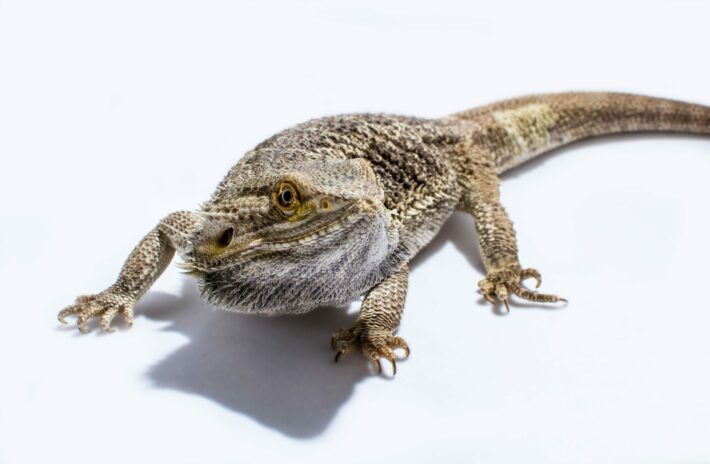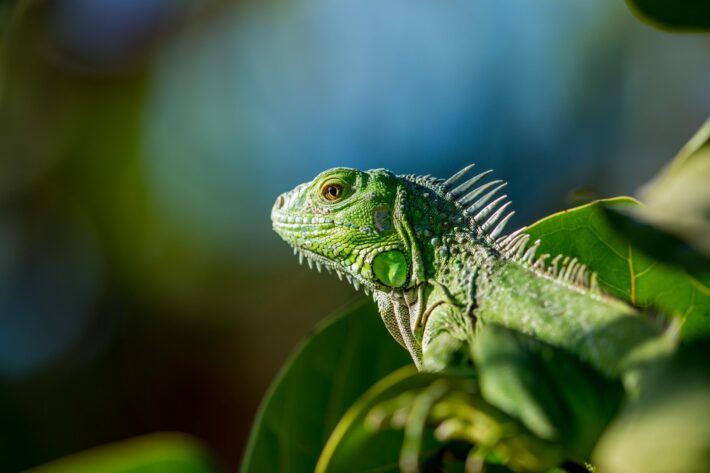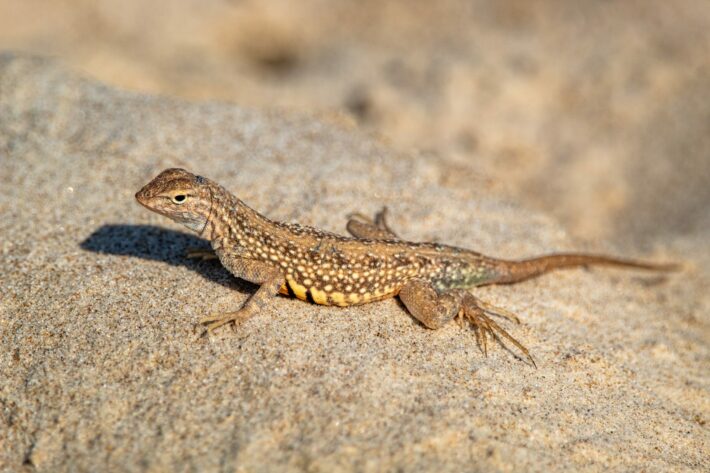Providing the right diet and feeding schedule is crucial when it comes to caring for your reptilian companion. Understanding what to feed your reptile and how often can ensure their health and vitality.
In this comprehensive guide, we will delve into the world of reptile nutrition, shedding light on the ideal food choices and feeding frequencies. Whether you have a bearded dragon, a gecko, or a snake, this article will equip you with the knowledge to create a balanced and nutritious meal plan for your scaly friend. Get ready to unlock the secrets of reptile feeding for optimal well-being!
https://www.youtube.com/watch?v=zVIr0ihpWxE&pp=ygUVaG93IHRvIGZlZWQgYSByZXB0aWxl
What are the recommended diets for different types of reptiles?
Different reptile species have varying dietary requirements. For example, bearded dragons thrive on a diet consisting of leafy greens, vegetables, insects, and occasionally fruits. Leopard geckos primarily feed on live insects, while snakes typically consume rodents, birds, or other small animals.
Turtles often require a combination of leafy greens, aquatic plants, and occasional protein sources. It’s important to research and understand the specific dietary needs of your reptile species to ensure they receive the proper nutrition for their overall health and well-being.
Consulting a veterinarian or reptile specialist can also provide valuable guidance in determining the ideal diet for your reptile companion.
How often should I feed my bearded dragon?

Bearded dragons are omnivorous and should be fed a balanced diet. Younger dragons (under a year) require daily feedings, consisting of a variety of insects and leafy greens. As they grow, their feeding frequency can be reduced to every other day or 2-3 times a week.
Adult bearded dragons can be fed every 2-3 days. It’s important to monitor their weight and adjust the feeding schedule accordingly. Always provide fresh water and ensure that insects are properly gut-loaded and dusted with calcium and vitamin supplements before feeding them to your bearded dragon.
What are the best feeder insects for my pet snake?
The best feeder insects for snakes vary based on the snake species and its size. Common options include appropriately sized mice, rats, or even chicks for larger species. However, some snake species, like ball pythons, may require smaller prey such as mice or rats of specific sizes.
It’s crucial to provide prey that matches the snake’s natural feeding habits and size. Additionally, it’s recommended to feed pre-killed or frozen-thawed prey to eliminate the risk of injury to the snake and ensure food safety.
Are there specific dietary requirements for leopard geckos?
Leopard geckos have specific dietary requirements. They are insectivores and primarily feed on live insects, such as crickets, mealworms, and waxworms. It’s important to provide appropriately sized insects that are properly gut-loaded and dusted with calcium and vitamin supplements to ensure a balanced diet.
Younger geckos should be fed more frequently, usually daily, while adult geckos can be fed every other day or a few times a week. Always monitor their weight and adjust the feeding schedule accordingly to prevent obesity or malnourishment.
Can I include fruits and vegetables in my reptile’s diet?
While fruits and vegetables can be included in some reptiles’ diets, it’s important to do so in moderation. Reptiles such as bearded dragons and tortoises can benefit from small amounts of fruits and vegetables as part of a varied diet.
However, other reptiles, like snakes, have more carnivorous diets and do not typically require fruits and vegetables. When including plant matter, ensure that it is safe and appropriate for your reptile species, and avoid foods that are toxic or harmful to them. Always research and consult reliable sources to determine suitable options for your reptile’s specific dietary needs.
What should I feed my turtle and how often?
Turtles have diverse dietary preferences depending on their species. Generally, turtles have omnivorous diets that consist of a combination of animal protein, such as feeder fish, insects, and commercial turtle pellets, as well as leafy greens, vegetables, and fruits.
Younger turtles may require daily feedings, while adult turtles can be fed every other day or a few times a week. It’s important to provide a balanced diet that meets the specific nutritional requirements of your turtle species. Researching the dietary preferences of your particular turtle species will help ensure their nutritional needs are met for optimal health.
| Turtle Species | Recommended Diet | Feeding Frequency |
|---|---|---|
| Red-Eared Slider | Aquatic plants, leafy greens, commercial turtle pellets | Every other day |
| Painted Turtle | Aquatic plants, small fish, insects, worms | Every 2-3 days |
| Musk Turtle | Aquatic plants, snails, crustaceans, insects | 2-3 times a week |
| Box Turtle | Leafy greens, vegetables, fruits, insects | Every other day |
| Map Turtle | Aquatic plants, insects, small fish | Every 2-3 days |
In the table above, we have provided information on recommended diets and feeding frequencies for different turtle species.
Are there any supplements I should add to my reptile’s diet?
Supplements play a vital role in ensuring reptiles receive proper nutrition. Calcium and vitamin D3 are commonly supplemented for reptiles to support bone health. Dusting feeder insects or coating them with calcium and vitamin supplements before feeding can help meet these requirements.
Some reptiles, such as those primarily fed plant-based diets, may also benefit from additional multivitamin supplements. However, it’s important to provide supplements in appropriate quantities and consult with a reptile veterinarian or specialist to ensure correct supplementation practices based on the specific needs of your reptile species.
What is the appropriate feeding schedule for corn snakes?
Corn snakes are carnivores and primarily consume rodents. Young corn snakes should be fed every 5-7 days, while adult corn snakes can be fed every 7-10 days. It’s essential to provide prey that is appropriately sized for the snake’s girth to prevent regurgitation or difficulty in swallowing.
Feeder rodents should be of high quality, disease-free, and ideally pre-killed or frozen-thawed to eliminate the risk of injury to the snake. Monitoring the snake’s weight and adjusting the feeding schedule accordingly will help maintain a healthy body condition.
Can I feed my reptile frozen or pre-killed prey?
Feeding frozen or pre-killed prey is generally recommended for the safety of both the reptile and the feeder animals. Freezing and thawing prey items eliminates the risk of injury to the reptile during the feeding process, especially for snakes and larger reptiles.
Additionally, frozen prey is often more accessible, and convenient, and can be nutritionally comparable to live prey when properly sourced and prepared. However, some reptiles, like certain monitors or larger snakes, may still prefer or require live prey due to their hunting instincts. It’s important to research and understand the specific feeding preferences of your reptile species.
Are there any foods that are toxic to reptiles?
Yes, certain foods can be toxic or harmful to reptiles. For example, some plants, such as avocado, rhubarb, and certain lilies, can be toxic to reptiles if ingested. Insects collected from pesticide-treated areas or plants with chemical residues should be avoided.
Additionally, feeding prey that is too large for the reptile can result in choking or digestive issues. It’s crucial to research and ensure that the foods offered to your reptile are safe and appropriate for their species. Consulting with a reptile veterinarian or specialist can provide further guidance on potential dietary hazards.
How often should I offer calcium supplements to my iguana?

Iguanas require calcium supplements to support their bone health. Generally, dusting the iguana’s food with a calcium supplement containing vitamin D3 is recommended. For young iguanas, it’s advised to provide calcium supplements at every feeding.
As iguanas mature, calcium supplementation can be reduced to 2-3 times a week, alternating with a multivitamin supplement. Monitoring the iguana’s overall health and consulting with a reptile veterinarian will help determine the appropriate supplementation schedule for your iguana’s specific needs.
What are the protein requirements for a healthy chameleon diet?
Chameleons have high protein requirements. Insect-based diets are crucial for their nutritional needs. Feeder insects such as crickets, roaches, silkworms, and hornworms are commonly offered to chameleons. The insects should be properly gut-loaded with nutritious foods and occasionally dusted with calcium supplements.
Young chameleons require daily feedings, while adults can be fed every other day or 2-3 times a week. Providing a varied diet with a wide range of insect species helps ensure the chameleon receives diverse nutrition and essential proteins for optimal health and growth.
Should I feed my reptile live or frozen rodents?
Feeding live or frozen rodents depends on the reptile species and their feeding behavior. Some reptiles, such as large snakes or monitors, may require live prey to stimulate natural hunting instincts. However, feeding live prey carries risks, including injury to the reptile or stress to the prey.
For smaller reptiles or those with more docile feeding behavior, frozen-thawed rodents are a safer option. Freezing also helps eliminate potential parasites or diseases in the prey. Always consider the safety of your reptile and choose the feeding method that suits their species and individual feeding preferences.
Are there any special considerations for feeding baby reptiles?
Feeding baby reptiles often requires more frequent meals compared to adult reptiles. They have higher metabolic rates and growth demands. Research the specific dietary requirements for your baby reptile species to ensure they receive adequate nutrition.
For example, baby bearded dragons may require daily feedings of appropriately sized insects and finely chopped greens. It’s essential to monitor their growth, adjust feeding quantities as needed, and provide a balanced diet rich in protein, calcium, and vitamins to support their healthy development.
What are the ideal prey sizes for feeding my pet monitor lizard?

Feeding appropriate prey sizes to your monitor lizard is crucial for their health and safety. The prey size should be proportional to the size of the lizard’s head or no wider than the distance between its eyes. For smaller monitor lizards, appropriately sized feeder insects, such as crickets or roaches, are suitable.
As the monitor lizard grows, it can progress to larger prey, including rodents or small birds. Ensuring that the prey is not too large helps prevent choking or digestive complications. Regularly monitoring your monitor lizard’s body condition and adjusting prey sizes accordingly will help maintain a healthy feeding regimen.
Clearly
Understanding what to feed your reptile and how often is crucial for their overall health and well-being. This comprehensive guide has provided valuable insights into reptile nutrition, offering recommendations for different species and shedding light on feeding frequencies.
By ensuring a balanced and nutritious diet tailored to the specific needs of your reptile, you can promote their vitality and longevity. Remember to research the dietary preferences and requirements of your reptile species, consult with experts if needed, and monitor their weight and overall health. By providing optimal nutrition, you can ensure a thriving and contented reptilian companion.




